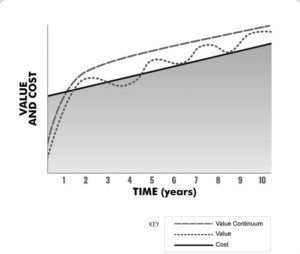Designing effective leadership development simulations through new technologies and methodologies is paramount to the mission my colleagues and I want to accomplish through our business simulations: developing skills for business leadership to create great leaders. Yet these technologies and methodologies are not enough to sustain our mission. What we do needs to be something that can be done outside of structured learning and development training.
Creating this was not an easy task, because the real world is, well, real. In a training and professional development program, participants have some level of control. However, in the real world, there are so many competing factors requesting their emotional and mental energy.
It is tough for people to get the feedback from others and from the systems in which they work. It is tough to make time to think. It is tough breaking through all the mental noise to focus on the problems at hand. To help people sustain the valuable insights they received from simulation training, my colleagues and I were led to develop the concepts of the Core Thinking Practices.
In an ideal world, we would all prefer to take the smooth road of the Value Continuum path, as shown in the graph below. Because of the reality of the world in which we live, however, a more likely path looks like the wavy line, which represents value and lies between the Value Continuum line and the Cost line. Most of us oscillate up and down like this. We swing back and forth between those times when we feel on top and are maintaining the big picture and those times when we’re looking up from the valleys, where we feel overlooked and are reacting to issues.
The challenge, then, is to reduce the time spent in the valleys. This is done by learning how to think and by becoming aware of the derailers and the impact they have on our thinking, attitude, and performance.

This may seem straightforward in the context of training simulation software, but what about after participants return to their day-to-day work environments? Maintaining a how-to-think mindset amidst the familiarity of the work world is difficult. How does a participant sustain the level of thinking achieved during effective leadership training—throughout life?
In 1983, Howard Gardner’s Frames of Mind: The Theory of Multiple Intelligences introduced the idea of interpersonal intelligence (the capacity to understand intentions, motivations, and desires of other people) and intrapersonal intelligence (the capacity to understand yourself and your own fears and motivations). Gardner’s theory suggested that intelligence is not only made up of the Core Abilities, but also includes emotions and the ability to recognize your fears, beliefs, and biases in the thinking process.
This is why my colleagues and I feel that in order to have effective leadership training, we can’t just teach people how to think. Leadership development consultants need to also equip people with the abilities that allow them to adapt emotionally to new situations. This conclusion led to the development of the Core Thinking Practices, which provide a framework for applying the Core Abilities while, at the same time, helping learners to uncover limiting beliefs.
Michael Vaughan is the CEO of The Regis Company, a global provider of custom business simulations and experiential learning programs. Michael is the author of the books The Thinking Effect: Rethinking Thinking to Create Great Leaders and the New Value Worker and The End of Training: How Business Simulations Are Reshaping Business.
